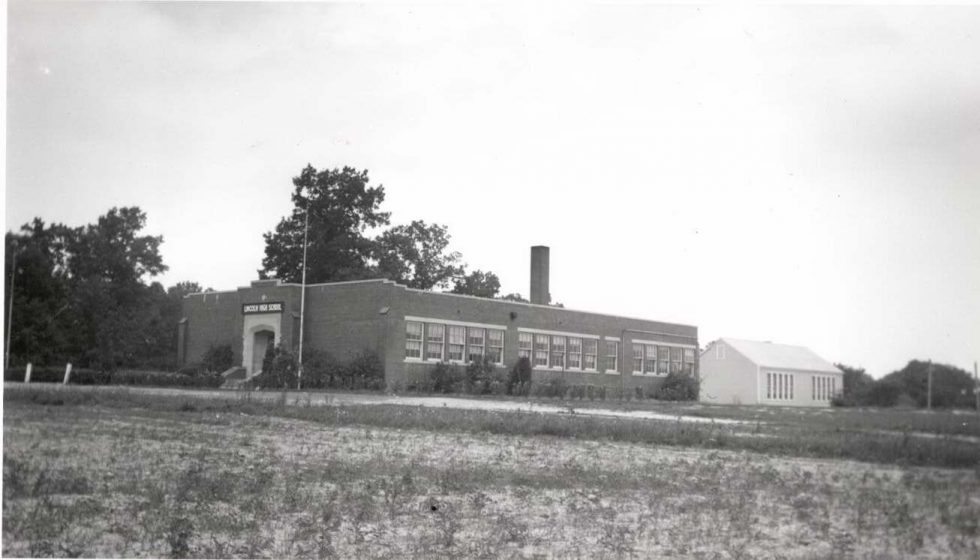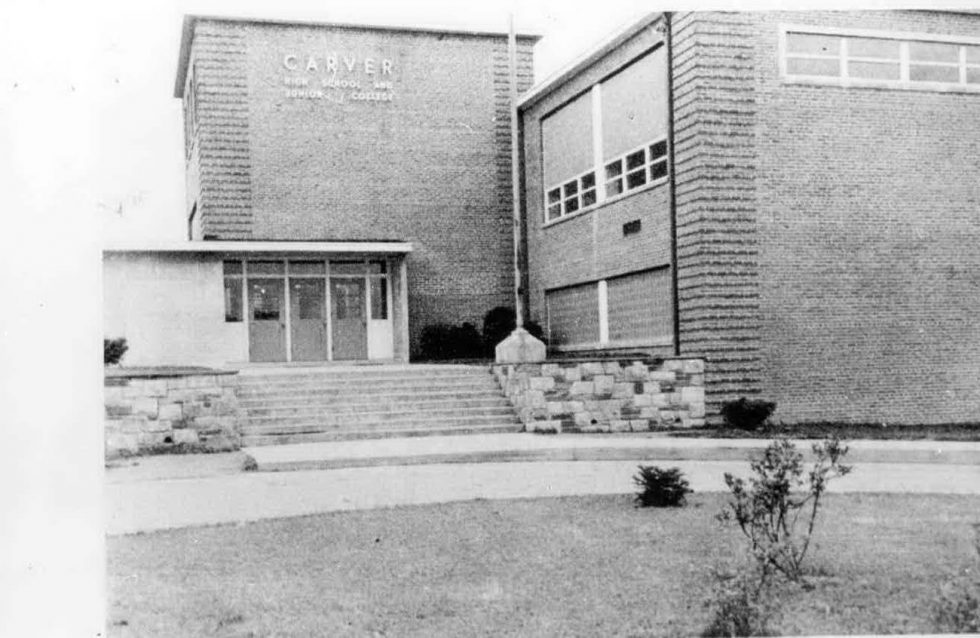The Effects of Brown vs. The Board of Education in Montgomery County
Secondary Education
Prior to 1927, when the first high school for black students was built in Montgomery County, African Americans who sought secondary level education had limited options. Most students were working to help support their families, often working outside jobs as well as helping at home. The shorter school years imposed on the black elementary schools, combined with the demands of family and employment that kept many older children away from class even when schools were open, meant that some students took extra years to graduate from primary education. Yet education was understood to be a vital step in the road to advancement. Teachers often stayed late to instruct those who were willing and ready to learn higher subjects, although a 1904 law prohibited black schools from teaching higher than a 5th grade level. Those who could afford the transportation and/or room and board attended high school in the District of Columbia, or moved even further afield.
A group of elementary school trustees went to the Board with plans for a high school in Rockville. These United Trustees, with the help of Supervisor Edward U. Taylor, were able to prove that their plans were viable, despite the somewhat willful skepticism expressed by the Board, who didn’t believe that there was any community interest in secondary education. After half the money was raised (the rest came from the Rosenwald Fund, not the county) and Taylor had found forty students, the Board approved construction. The Rockville Colored High School, on North Washington Street, opened in 1927 with Taylor as teacher principal, and forty eighth graders.
The first year, classes were only half day, there were no new textbooks, and Taylor drove six of the students to school himself. Although the first class lost pupils to family and work needs, each succeeding class was larger. Students came from all over the county to take advantage of the school’s relative proximity, and soon the two-room school was far too small. They used the bathrooms, and eventually a basement science lab, in the elementary school across the street. After a few years they began renting room at the Fisherman’s Hall. One school bus, purchased by the trustees, soon gave way to three, two of which were given by the Board (although students, unlike whites, had to pay to ride).

Lincoln High School, Rockville, c. 1940s. This, the second building to house the county’s sole black high school, was originally an abandoned frame building from Takoma Park that the county moved to Lincoln Park and gave a brick facade. Lincoln High School opened in the fall of 1935.
The United Trustees began asking for a larger building, on a new site. The Board found an abandoned building in Takoma Park, moved it to Lincoln Park, and gave it a brick facade. The new Lincoln High School opened in September, 1935, with 236 students in grades 8-11 (unlike the white schools, there was still no twelfth grade, until it was added in 1943). Lincoln had six classrooms, an office, and two lavatories. Additions and temporary buildings were added throughout Lincoln’s tenure as the sole black county high school. Students came from all over the county, still paying for their bus ride, which was often several hours each way. Some pupils came from Howard County, because Lincoln was closer than Howard’s sole black high school.
By 1950, enrollment at Lincoln had tripled. It was decided to build yet another, larger high school, and turn Lincoln into a junior high. George Washington Carver High School and Junior College, on Rockville Pike, opened in the fall of 1950. The Junior College, founded by Parlett Moore, was a companion to the segregated Montgomery Junior College across the street. After 1954, some Carver students began transferring to their home schools. Carver closed for good in the spring of 1960.

George Washington Carver High School and Junior College, c. 1953.
